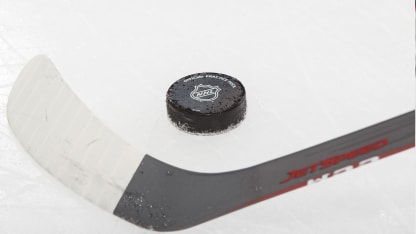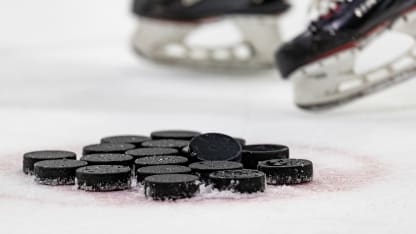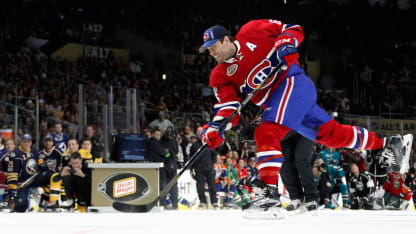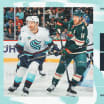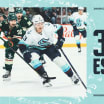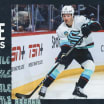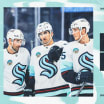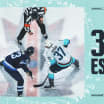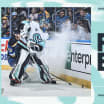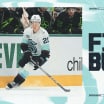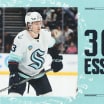NHL referees and linesmen will swap out pucks during breaks in the action to keep the puck movement at a maximum. The typical NHL game requires 15 to 20 pucks due to officials swapping in a new one or a puck flipping over the glass into the crowd.
During this spring's NHL playoffs, pucks with a thermochromic coating were used to help officials recognize pucks that were too warm. The printing on the postseason frozen pucks was purple, changing to clear when the puck's temperature goes above freezing. Before faceoffs, officials could more easily determined if it was time to swap out pucks.
While players themselves bump into each other dozens of times per game, the puck is colliding the most: sticks, boards, off players. There are two kinds of puck collisions: elastic and inelastic.
The elastic collision basically means the force of the puck is met with equal reaction, such as puck hitting the side or end boards and bouncing right out. The inelastic collision is what goalies crave; it means the force of the puck is mostly absorbed. In the case of a shot on goal, the goaltender is looking for the most inelastic collision, say, hitting a piece of padding that deadens the action and stays near the goalie to hold or clear. A less elastic collision, maybe off the stick blade, can provide enough of a reaction to create a rebound or second shot.
Gehrz is a leading expert in the study of novas and supernovas, a class of stars that show a sudden gigantic increase in brightness and then slowly return to its original state over months. A supernova can shine as bright as an entire galaxy.
READ: Sticking to it - Why Stickhandling is Trending Up
But Gehrz also knows his fair share about the physics of a slapshot, the wind-up above the shoulders and let-it-rip attempt to score. Some NHL players can top 100 miles per hour with their slapshots and the league-wide average is somewhere between 85 to the mid-90s, depending on who is measuring. Boston's six-foot-nine defenseman Zdeno Chara has the fastest slap shot on record, topping 108 miles per hour.
"What lots of fans don't know is all slapshots follow a parabolic arc," Gerhz. "It means the shot will drop. Gravity makes it so."
To help with the visuals, Gehrz points out the baseball home run follows a parabolic arc. Pretty much a what goes up, must come down proposition. The difference between home runs and slap shots is effectively distance traveled; it is much easier to track the drop of long fly ball.
Players with the best slap shots are actually striking the ice with their stick blades about an inch or two behind the puck. While this seems counterintuitive for maximum miles per hour, what's happening is the striking of the ice first transfers energy to the stick, which then releases and rapidly shoots the puck in whip-like fashion. The player is simultaneously rolling the wrists to open the launch angle of the stick blade to lift the puck off the ice.
Luckily for us, including any would-be slapshot artists out there, Gehrz has calculated just how much a slapshot will drop.
"Let's just say the shot travels 100 miles per hour for simplicity," says Gehrz. "If you shoot from 30 feet [halfway between the blue line and goal line in the offensive zone], the puck will drop seven inches. You actually aim the shot higher to allow for the drop. If you shoot from the blue line or 60 feet [commonly performed by defensemen on the offensive end], a 100-mile-per-hour slapshot will drop two and a half feet. "

